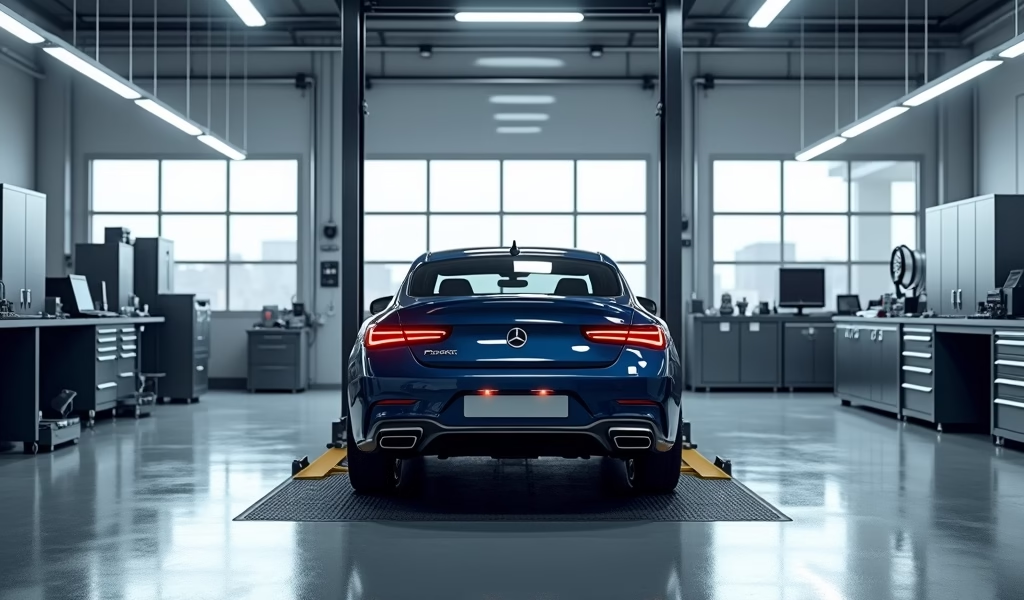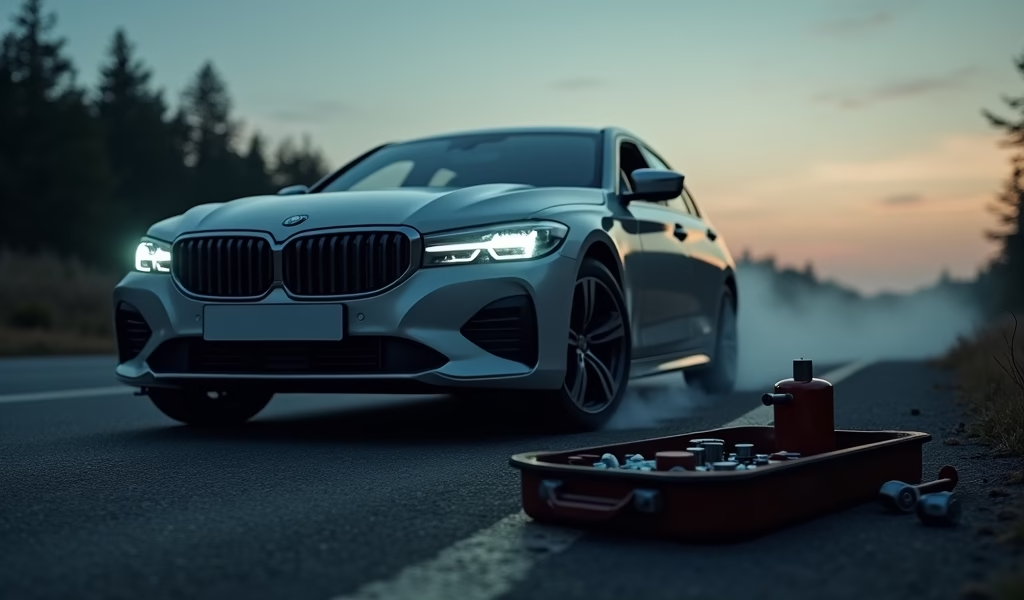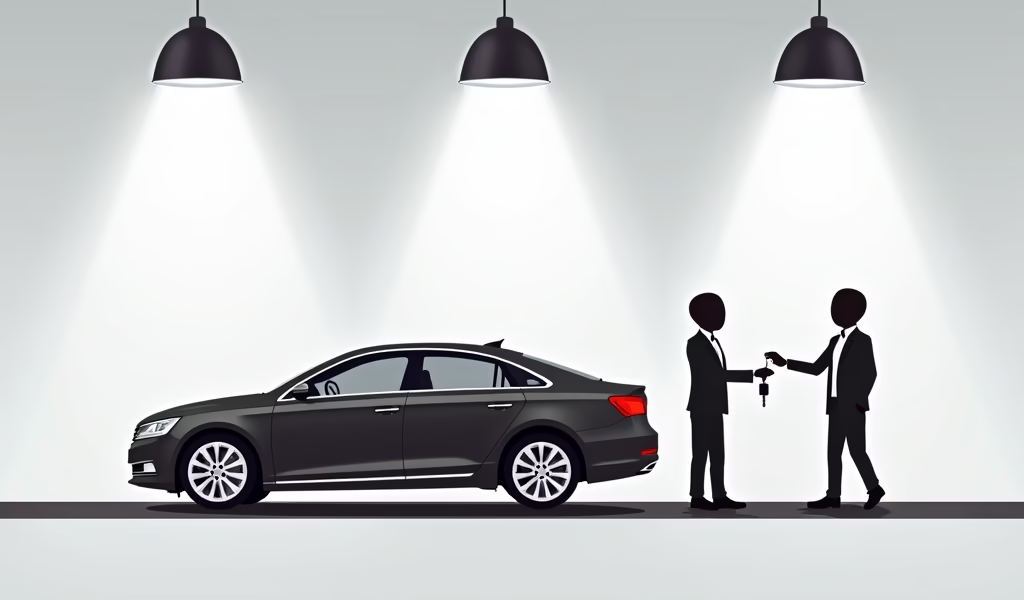Overview
This article provides seven essential tips for successfully leasing a car, including understanding leasing terminology, leveraging negotiation power, calculating total costs, managing mileage allowances, preparing for lease-end, considering gap insurance, and having an exit strategy. It contrasts leasing with buying, highlighting that leasing offers lower monthly payments and the opportunity to drive newer vehicles regularly, while buying builds equity over time—making the best choice dependent on individual driving habits, financial goals, and preferences.
Table of Contents
- Understanding Car Leasing: The Basics
- Leasing vs. Buying: What’s the Difference?
- Tip #1: Master the Leasing Lingo
- Tip #2: Know Your Negotiation Power
- Tip #3: Calculate the Complete Cost
- Tip #4: Be Smart About Mileage
- Tip #5: Prepare for Lease End
- Tip #6: Consider Gap Insurance
- Tip #7: Have an Exit Plan
- Conclusion
- Frequently Asked Questions
Understanding Car Leasing: The Basics
Imagine test-driving a relationship with your dream car before committing to “till rust do us part.” That’s essentially what leasing a car offers—a chance to enjoy that new car smell and cutting-edge features without the long-term commitment of ownership.
When you lease a vehicle, you’re essentially borrowing it from the dealership for a set period—typically 2-4 years. You’ll make monthly payments that cover the car’s depreciation during your time with it, plus interest and fees. It’s like renting an apartment for your car; you get the keys, enjoy the ride, and return it when the lease ends.
Today, nearly 30% of new vehicles roll off the lot under lease agreements rather than purchase contracts. This popularity isn’t surprising when you consider the appeal: lower monthly payments, the joy of driving a new vehicle every few years, and avoiding the hassle of selling a car when you’re ready for something different.
As a mechanic who’s seen the pros and cons of both leasing and financing a new vehicle, I can tell you that understanding the nuts and bolts of leasing can save you thousands and help you avoid common pitfalls. Let’s pop the hood on car leasing and examine what makes it tick.
Leasing vs. Buying: What’s the Difference?
Think of buying a car as planting a tree in your yard—it’s yours to nurture, and eventually, it provides value even after you’ve paid it off. Leasing, on the other hand, is more like visiting a botanical garden—you enjoy the beauty without the long-term responsibility of maintenance.
When you buy a car, each payment builds equity until you own it outright. Once paid off, you can drive it payment-free for years, sell it, or trade it in. Most car buyers keep their vehicles for about six years, extracting value well beyond the loan period.
With leasing, your payments are typically 20-30% lower because you’re only paying for the vehicle’s expected depreciation during your lease term. This financial arrangement lets you slide behind the wheel of a more expensive car than you might afford when purchasing. The trade-off? You’ll always have a car payment, much like a subscription service for your transportation needs.
For drivers who crave variety or need reliable transportation with minimal maintenance concerns, leasing offers a tempting proposition. You’ll always drive a late-model vehicle covered by warranty, and you can simply hand back the keys when newer models with fancier features beckon.
According to Experian’s automotive data, the average lease payment runs about $135 less per month than the average auto loan payment. That difference might fund your coffee habit, boost your retirement savings, or simply provide more breathing room in your monthly budget.

Tip #1: Master the Leasing Lingo
Walking into a dealership without understanding leasing terminology is like trying to fix a car without knowing a wrench from a screwdriver—you’re likely to get confused and possibly taken advantage of. Let me share the essential terms that’ll help you navigate the leasing landscape:
Residual Value: This is what the leasing company predicts your car will be worth when your lease ends. Think of it as the car’s expected “retirement savings.” Higher residual values mean lower monthly payments because you’re paying for less depreciation. Brands like Lexus and Subaru typically maintain strong residual values, which explains why they often offer competitive lease deals.
Money Factor: This is lease-speak for interest rate, just dressed up differently. To convert a money factor to APR (the interest rate you’re familiar with), multiply it by 2,400. For instance, a money factor of 0.00125 equals a 3% APR. The lower this number, the better the deal you’re getting.
Capitalized Cost (Cap Cost): This is the price used to calculate your lease payments—essentially what the car is “worth” for leasing purposes. Just like you’d haggle over the sticker price when buying, you should negotiate to reduce this figure when leasing.
When a salesperson slides that lease agreement across the desk, don’t hesitate to ask for clarification on these terms. Request the money factor in writing and compare it to current market rates. In my years working with customers post-lease, I’ve seen too many folks who didn’t realize they’d agreed to an inflated money factor, essentially paying premium interest without knowing it.
Tip #2: Know Your Negotiation Power
Despite what some smooth-talking salespeople might suggest, nearly everything in a lease agreement is up for negotiation. It’s like building a custom car—you can select the components that work best for your driving style and budget.
Start by negotiating the capitalized cost just as vigorously as you would when purchasing. Every $1,000 you trim from the cap cost reduces your monthly payment by roughly $28 on a 36-month lease. That morning coffee money adds up!
The money factor is also negotiable, especially if your credit score gleams like a freshly waxed fender. Don’t accept the first rate offered—ask if there are promotional rates available or if they can do better based on your stellar credit history.
While the residual value typically comes from the leasing company rather than the dealer, you can shop around for manufacturers offering promotional lease programs with boosted residual values. These special programs often appear at model year-end or when manufacturers need to move specific models.
Remember that the dealer’s first offer is like an initial diagnosis—it’s just a starting point. Be willing to walk away, compare offers from multiple dealerships, and let them know you’re shopping around. As we say in the shop, “The squeaky wheel gets the grease!”
If you’re feeling intimidated by the process, consider getting pre-approved for your auto financing before visiting the dealership. This gives you a powerful baseline for negotiating better terms.
Tip #3: Calculate the Complete Cost
Leasing can be like looking at a car with a beautiful paint job—what’s visible might impress you, but you need to check under the hood to understand the complete picture. To assess the true cost of leasing:
Look beyond that tempting monthly payment figure to include the down payment (sometimes cleverly called “drive-off fees”). Many lease advertisements showcase seductively low monthly payments but require several thousand dollars upfront. To properly compare deals, calculate the total lease cost: multiply the monthly payment by the number of months, then add all upfront costs.
Be aware of the “hidden bolts” that secure the lease structure: acquisition fees (typically $395-$895), disposition fees (usually $300-$500 when you return the vehicle), and sometimes security deposits. These costs aren’t always mentioned in the big-print advertising but can significantly impact your total outlay.
Understand your maintenance responsibilities too. While routine maintenance falls to you, most leased vehicles remain under the manufacturer’s warranty for the entire lease term, protecting you from major repair expenses. However, the lease may require dealer service—often pricier than your local independent mechanic.
Insurance requirements for leased vehicles typically include higher liability limits and lower deductibles than you might choose when owning. This could increase your insurance premiums by 15-30% compared to a purchased vehicle with more flexible coverage options.
As the old mechanic’s wisdom goes, “Measure twice, cut once.” Take time to calculate these figures carefully before signing anything.
Tip #4: Be Smart About Mileage
Mileage allowances in lease contracts are like tachometer redlines—exceed them at your financial peril. Standard leases include 10,000-12,000 miles annually, but with Americans driving 13,500 miles per year on average according to the Federal Highway Administration, there’s a potential mismatch that could cost you.
Excess mileage charges typically range from $0.15 to $0.30 per mile. Going just 5,000 miles over your allowance could mean an additional $750-$1,500 due when you return the keys. That’s enough to drain the oil from any good lease deal.
To gauge your needs accurately, check your current odometer and calculate your yearly average. Then add a 10-15% buffer for unexpected road trips or changes in your commute. If you’re planning a move or job change that might affect your driving patterns, factor this into your calculations.
If you anticipate higher mileage, negotiate a higher allowance upfront. While this increases your monthly payment, it’s substantially cheaper than paying the penalty rate later. For example, purchasing an additional 5,000 miles per year might add $20-$25 to your monthly payment but could save you hundreds at lease-end.
I’ve seen too many customers roll back into the shop with lease-end anxiety, suddenly realizing they’re thousands of miles over their limit. Don’t be that driver—plan your mileage like you’d plan a cross-country trip: with plenty of margin for detours.

Tip #5: Prepare for Lease End
The end of your lease is like the finish line of a race—how you approach it matters tremendously. Being prepared can save you from unexpected costs and stress.
About 90 days before your lease concludes, the leasing company will contact you to arrange a pre-inspection. This evaluation identifies any damage beyond “normal wear and tear.” It’s definitely in your interest to complete this inspection, as it gives you time to address issues that might otherwise result in charges.
The definition of normal wear and tear can be subjective. Generally, small scratches (under 2 inches), minor wheel scuffs, and tiny dents won’t raise eyebrows. But larger damage, cracked glass, torn upholstery, or mechanical problems will likely trigger fees. I recommend addressing any significant issues before the final inspection—independent repair shops often charge considerably less than the leasing company’s predetermined rates.
At lease end, you typically have three options: return the vehicle and walk away, purchase it at the predetermined residual value, or lease a new vehicle. Each choice carries different financial implications. If your car’s market value exceeds its residual value (common in recent years with supply shortages), purchasing it might be advantageous.
One customer of mine leased a popular SUV just before the pandemic. When her lease ended, the vehicle was worth nearly $5,000 more than the residual value due to market conditions. By purchasing it at the end of her lease, she essentially “made” $5,000 compared to returning it and leasing a new vehicle.
Tip #6: Consider Gap Insurance
Gap insurance is the safety net you hope you’ll never need—but you’ll be immensely grateful for it if disaster strikes. This coverage addresses the “gap” between what your regular insurance pays (the current market value) and what you still owe on your lease if your car is totaled or stolen.
Here’s why it matters: vehicles depreciate most rapidly in their first years—precisely when you’re leasing. If your new $35,000 car loses 25% of its value in the first year but your lease payoff only decreases by 15%, you could be facing a significant shortfall if an accident occurs.
While dealerships offer gap coverage, they often mark up the price significantly—sometimes by 200% or more. You can typically purchase gap insurance from your regular auto insurance provider at a much lower cost, often just $60-$120 per year. Some leasing companies include gap coverage in their contracts, so check before purchasing additional protection.
For most leases, gap insurance makes financial sense, particularly during the first two years when the gap between the car’s value and your lease obligation is largest. As a mechanic who’s seen plenty of cars declared total losses after accidents, I can tell you that the peace of mind is worth every penny.
Tip #7: Have an Exit Plan
Life changes like a car’s performance when the temperature drops—sometimes unexpectedly. Even before signing a lease, it’s wise to consider how you might exit if circumstances change.
Early termination can be costly, with penalties often equivalent to continuing the lease until term. However, several alternatives exist that can save your wallet from major damage:
Lease transfer (sometimes called lease assumption) is typically the most economical exit strategy. Services like Swapalease or LeaseTrader connect people wanting to exit leases with those seeking short-term commitments. While this usually involves a transfer fee ($300-$500), it’s substantially cheaper than termination penalties.
Some manufacturers allow you to “pull ahead” your lease end by a few months if you lease another vehicle from them. This option works best when you’re within six months of your scheduled end date and provides a convenient bridge to your next vehicle.
If you’ve maintained your vehicle well and market conditions are favorable (as we’ve seen recently with used car values soaring), your leased vehicle might be worth more than the residual value. In such cases, dealerships might buy out your lease and apply the equity to your next vehicle.
I recommend reviewing your lease situation annually, much like you’d check your tire pressure or oil level. This helps you understand your options if circumstances change and ensures you’re not caught off guard by major life shifts.
When approaching a new car purchase or lease, always consider your future needs, not just your current situation. The sports car might seem appealing now, but how will it fit your lifestyle if family plans are on the horizon?
Conclusion
Leasing a car is like having a revolving door to the automotive world—you get to experience the latest models without long-term commitment, but you’ll always have a payment to make. For those who enjoy driving newer vehicles, appreciate predictable expenses, and don’t mind the perpetual payment cycle, leasing can be a perfect fit.
The seven tips we’ve explored—mastering terminology, flexing your negotiation muscles, calculating true costs, managing mileage expectations, preparing for lease-end, considering gap insurance, and planning your exit strategy—form a roadmap for making smart leasing decisions.
Remember that leasing isn’t inherently better or worse than buying; it’s simply a different approach to getting behind the wheel. Your driving habits, financial goals, and personal preferences should guide this decision.
Before signing your next lease, take time to run the numbers, read the fine print, and ensure the terms align with your needs. A well-structured lease can provide years of driving pleasure without the long-term commitment—perfect for those who prefer flexibility and variety in their driving experience.
Having seen countless customers navigate both leasing and buying over my years in the garage, I can tell you that the most satisfied ones aren’t necessarily those who chose one option over the other—they’re the ones who fully understood their choice and selected the option that best suited their lifestyle. Now that you know what it means to lease a car, you’re equipped to make that informed decision for yourself.
Frequently Asked Questions
What credit score do I need to lease a car?
Most leasing companies prefer scores of 620 or higher for approval. Scores above 700 typically qualify for the best rates and terms.
Can I negotiate a car lease?
Absolutely—you can negotiate the capitalized cost (vehicle price), money factor (interest rate), and sometimes even mileage allowances. The residual value is typically set by the leasing company, not the dealer.
Is it cheaper to lease or buy a car?
Leasing typically offers lower monthly payments but results in no ownership equity. Buying costs more monthly but builds equity and becomes more economical if you keep the vehicle beyond the loan payoff.
What happens if I damage my leased car?
You’re responsible for repairs beyond normal wear and tear. Minor scratches and small dents are usually acceptable, but significant damage must be repaired before returning the vehicle or you’ll face excess wear charges.
Can I end my car lease early?
Yes, but early termination often triggers substantial penalties. Better options include transferring your lease to someone else, trading it in if it has equity, or asking about manufacturer “pull-ahead” programs.

